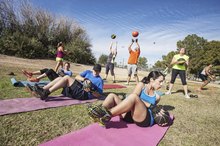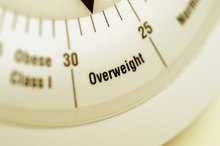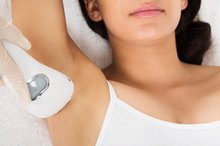How to Lose Weight With SlimLine
The SlimLine, also known as the SlimLine Pod, is a cocoon-shaped capsule that delivers dry heat to help stimulate weight loss. The top of the SlimLine opens so that you can lie on the ergonomic bed, close the top and, while your head remains outside the capsule, receive whole body heat therapy.
Definition
The SlimLine Pod is marketed as a weight-loss device that stimulates metabolism and lowers the body’s set point. Advertisements for the system state that SlimLine is better than a traditional weight loss diet because diets fail if you don't also increase your metabolism. The company that invented the pod, Sybaritic, Inc., doesn’t emphasize the weight-loss potential. Rather, it describes the pod as an environment to complement exercise, fitness, personal training and spa treatments.
- The SlimLine Pod is marketed as a weight-loss device that stimulates metabolism and lowers the body’s set point.
- Rather, it describes the pod as an environment to complement exercise, fitness, personal training and spa treatments.
How It Works
How Many Calories Do I Burn Doing Barry's Bootcamp?
Learn More
Infrared lights inside the SlimLine deliver dry heat up to a temperature of 178 degrees Fahrenheit. The heat raises your body temperature, which causes your basal metabolic rate to increase. The basal metabolic rate is the rate at which your body constantly burns energy to keep vital processes functioning, such as body temperature, blood circulation, tissue repair and muscle movement. Any time your body temperature increases, whether from the dry heat produced by the SlimLine or a fever, your metabolism increases. When metabolism increases, you burn more calories. The basal metabolic rate remains elevated for a period of time after you leave the SlimLine, but how long it stays elevated varies for each person. Total lean body mass, overall health, eating habits and the type of exercise regimen you follow all impact the basal metabolic rate. Some people report a weight loss of one to three pounds from one session in the SlimLine, but such immediate results are likely due to water loss.
- Infrared lights inside the SlimLine deliver dry heat up to a temperature of 178 degrees Fahrenheit.
- The basal metabolic rate remains elevated for a period of time after you leave the SlimLine, but how long it stays elevated varies for each person.
How to Use
The SlimLine Pod is an expensive piece of equipment found primarily at spas. One session in the SlimLine lasts 20 to 40 minutes. Rates for one session are different for spa members versus nonmembers, and you may get a discounted price if you purchase more than one session, but expect to pay in the range of $35.00 to $40.00 per session, according to PowerUp Sports and Wellness. The most important variable -- how many sessions you’ll need to lose weight -- is impossible to predict. In addition to the factors that influence changes in your metabolism, time spent in the SlimLine, frequency of sessions and even the temperature you can tolerate while in the pod are all variables that determine how much weight, if any, you’ll lose from the SlimLine.
- The SlimLine Pod is an expensive piece of equipment found primarily at spas.
- Rates for one session are different for spa members versus nonmembers, and you may get a discounted price if you purchase more than one session, but expect to pay in the range of $35.00 to $40.00 per session, according to PowerUp Sports and Wellness.
Other Benefits
How to Care for Sunburned Skin
Learn More
The SlimLine also encourages relaxation and helps relieve stress by providing aroma therapy and massage. Whole body LED light therapy emits wavelengths of light that can be absorbed by the skin 1. Light therapy stimulates blood flow, encourages tissue repair that may counteract the effects of aging and has been used to treat acne and seasonal affective disorder 1.
Related Articles
References
Writer Bio
Sandi Busch received a Bachelor of Arts in psychology, then pursued training in nursing and nutrition. She taught families to plan and prepare special diets, worked as a therapeutic support specialist, and now writes about her favorite topics – nutrition, food, families and parenting – for hospitals and trade magazines.









